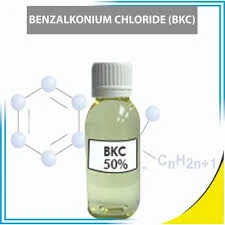polyaluminum chloride coagulant
Polyaluminum Chloride Coagulant An Overview of Its Properties and Applications
Polyaluminum chloride (PAC) is a widely used coagulant in the water treatment industry, renowned for its effectiveness in purifying drinking water and treating wastewater. Its unique chemical properties allow it to aggregate suspended particles, facilitating their removal and leading to clearer, cleaner water. This article will delve into the characteristics, advantages, and applications of polyaluminum chloride in various sectors.
Chemical Composition and Properties
Polyaluminum chloride is a polymeric form of aluminum chlorides, characterized by its high charge density and varied molecular weight. It is typically produced by reacting aluminum hydroxide with hydrochloric acid, resulting in a coagulant with a complex polymeric structure. The degree of polymerization can vary, influencing its coagulation properties. PAC can exist in several forms, including dry powder and liquid, providing flexibility for different applications.
The primary mechanism of PAC in water treatment involves destabilizing colloidal particles. The high charge density of PAC promotes the aggregation of these particles, making them easier to remove through sedimentation or filtration. Additionally, PAC’s performance is less sensitive to pH changes compared to traditional coagulants like alum, making it suitable for various water qualities.
Advantages of Polyaluminum Chloride
The use of polyaluminum chloride offers several advantages over conventional coagulants
1. Enhanced Performance PAC's ability to function effectively across a wide pH range makes it more versatile than other coagulants. Its higher charge can rapidly destabilize particles, improving the efficiency of the coagulation process.
2. Reduced Sludge Production Compared to alum, PAC generates less sludge during the coagulation process. This reduction is beneficial for wastewater treatment facilities where managing sludge disposal can be challenging and costly.
3. Lower Dosage Requirements Due to its higher efficiency, PAC typically requires lower application doses than traditional coagulants. This not only leads to cost savings but also minimizes the need for further chemical adjustments.
polyaluminum chloride coagulant

4. Improved Water Quality Using PAC often results in better overall water quality, including enhanced color and turbidity removal. This is particularly crucial for drinking water treatment, where aesthetic and health standards must be met.
Applications of Polyaluminum Chloride
Polyaluminum chloride finds applications in various sectors, including
- Drinking Water Treatment PAC is extensively used in the treatment of potable water, ensuring that it meets safety and quality standards for public consumption. Its ability to effectively remove impurities contributes to the production of clean, safe drinking water.
- Wastewater Treatment In wastewater treatment plants, PAC plays a vital role in clarifying effluents, significantly reducing suspended solids before discharge. Its efficiency aids in meeting regulatory requirements and protecting aquatic ecosystems.
- Paper and Pulp Industry PAC is also utilized in the paper manufacturing process as a retention aid, improving fiber retention and paper quality while reducing waste.
- Textile and Dyeing Industries In textile processing, PAC helps in removing excess dyes and impurities from wastewater, contributing to more sustainable production practices.
Conclusion
Polyaluminum chloride coagulant is an essential component in modern water treatment processes, offering numerous advantages that enhance efficiency and effectiveness. Its ability to work across different pH levels, combined with its lower sludge production and improved water quality outcomes, makes PAC a preferred choice in various applications. As the demand for clean water continues to grow globally, the role of PAC in sustainable water management will undoubtedly remain significant.
-
Understanding Polycarboxylic Acids: Properties, Applications, and Future PotentialNewsJul.28,2025
-
Scale Inhibitor Explained: How to Protect Your System from Limescale and Hard Water DamageNewsJul.28,2025
-
Scale and Corrosion Inhibitors: Essential Chemicals for Industrial Water System ProtectionNewsJul.28,2025
-
Polyaspartic Acid: A Biodegradable Polymer for Sustainable ChemistryNewsJul.28,2025
-
Isothiazolinones: A Versatile Antimicrobial Class with Industrial Power and Regulatory ChallengesNewsJul.28,2025
-
A Deep Dive into 2-Phosphonobutane-1,2,4-Tricarboxylic Acid (PBTC)NewsJul.28,2025





